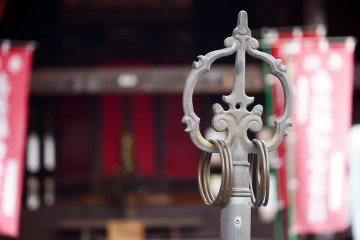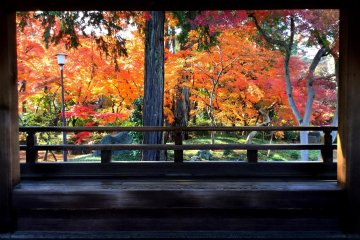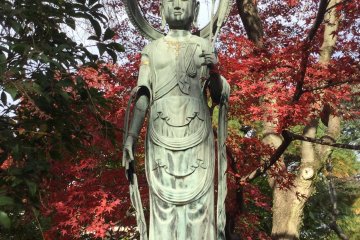Overview
Saitama Prefecture has been a gateway to other parts of Japan for centuries. The old Oshu Kaido and Nikko Kaido passed through half a dozen former post station towns that are now situated in modern Saitama Prefecture. Along these old routes and deeper into the western part of the prefecture are dozens of places that exude antique and historical character.
The prefecture is dotted with temples and pilgrimage routes. Today, From the rail hub at Omiya Station or from central Tokyo, it’s easy to explore the temple heritage in the prefecture.
Shimabuji Temple
The mountainous Chichibu area has a 34 station pilgrimage to temples associated with Kanon, the Buddhist incarnation of mercy. The route starts with the charming Shimabuji Temple. The temple is a 40-minute walk from Onohara Station on the Chichibu Railway or a 20-minute bus ride from Chichibu Station.
Shichifukujin Meguri, Soka City

If your visit brings you to Saitama Prefecture in January, consider a popular way to pray for good fortune, a shichifukujin meguri. These min-pilgrimages to gather good luck usually follow a route of closely-spaced temples dedicated to the Seven Gods of Good Fortune. A representative is the Soka City shichifukujin meguri is right outside Tokyo at Soka City, a post town on the Nikko and Oshu Kaido routes. A highlight of the route is Tofukuji, a Shingon Buddhist temple at the heart of Soka’s post-town history.
You’ll find other mini-pilgrimage routes in other cities, including Kawagoe City.
Kitain

The spiritual heart of Kawagoe City is the temple Kitain. This Tendai Buddhist temple, said to have been founded over 1000 years ago, flourished under the Tokugawa shogunate in the Edo era. Today, it preserves a hall that once belonged to Edo Castle, a towering gate and 500 Rakan statues each with unique expressions. Many visitors search among the statues for zodiac animals that accompany the sages. Kitain is an 18-minute walk from Kawagoeshi Station on the Kawagoe Line.
Nakain

This temple was one of three sections of the Tendai temple complex in Kawagoe City but today, besides Kitain, only Nakain remains. In the Heian era, Tendai Buddhist priest Enin who founded the series of temples brought tea from Kyoto. This variety is the progenitor of the Sayama tea variety grown in Saitama Prefecture. You’ll find a monument commemorating Enin’s contribution to tea drinking in the garden. The best times to visit are in spring for the weeping cherry trees and in autumn for fiery maple trees shading the statuary. Nakain is a 15-minute walk from Honkawagoe Station on the Seibu Shinjuku Line.
Seitenkyu

West of Kawagoe City in Sakado City is Seitenkyu, a temple that transports you to Taiwan. This is Japan’s largest Taoist temple in the Taiwanese architectural tradition. The hall with its curving yellow-tiled eaves and monumental sculptures honors three Taoist gods. The temple provides guidance on how to cast your fortune and pay your respects. Seitenkyu is a 35-minute walk from Wakaba Station on the Tobu Tojo Line.











